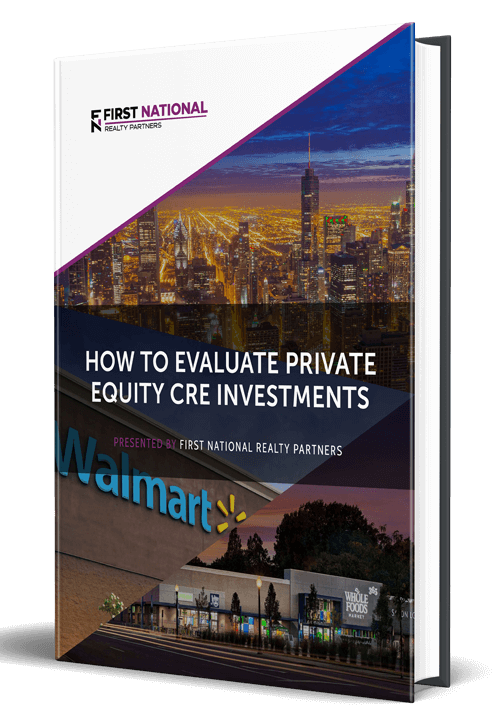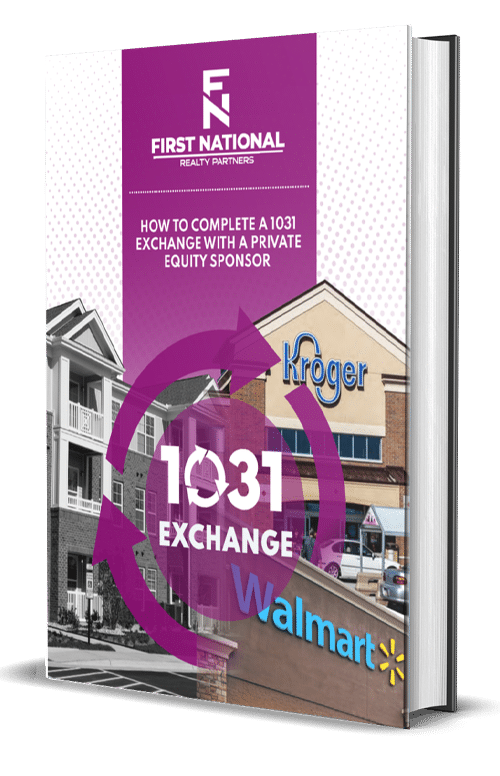When an individual chooses to invest their capital in any asset, they do so with the expectation of earning a return over time. When it comes to a commercial real estate (“CRE”) investment property, return on investment comes in two forms, income/cash flow and appreciation and they make up the backbone of the commercial real estate investing concept that we refer to as a “fuse burning at both ends.”
Income
Fundamentally, the business plan and investment strategy for all commercial real estate rental properties is the same, an investor purchases a property with a mix of debt and equity and they lease the space in it to other businesses in return for some amount of rental income.
No matter the property type, the income earned from leasing activity is used to pay the property’s operating expenses, including the loan, and this is one end of the “fuse.” To understand this concept, it is first important to review the structure of a typical loan. The idea is simple, a lender will advance a sum of money to the investor in return for a pledge to repay it over time. With each payment, a portion goes to pay the interest and the remainder goes to paying the principal balance. The exact amounts are predetermined when the loan is advanced based on something called an “Amortization Schedule.” To illustrate how this works, assume a loan for a multifamily property of $1MM, an interest rate of 6%, and an amortization of 30 years. The following table details the amortization schedule for the first and last 6 payments:

The loan amount of $1MM, interest rate of 6%, and amortization of 30 years results in a fixed payment of $5,995.51 monthly. In the first month, $5,000 of this amount goes to pay the loan’s interest and the remaining $996 goes to pay the loan’s principal balance. The ending balance is $999,004. So, in the next month, slightly less goes to interest ($4,995) and slightly more goes to principal ($1,000). This pattern continues over the life of the loan so that, towards the end of the loan period, the vast majority of the monthly payment goes towards principal. This can be seen in the final month where $30 goes to interest and $5,966 goes to principal resulting in an ending balance of $0.
This is one end of the “fuse.” The monthly income collected from tenants is used to make the required monthly loan payments. With each payment, the principal balance of the loan goes down (paid by someone else’s money) and the investor builds “equity” in the property – assuming the value stays the same. As time passes, more and more of each monthly loan payment goes towards principal and the process of building equity accelerates. This is one reason why many commercial real estate investment holding periods are measured in 5-10 years – to allow enough time to build significant equity in the property.
Another way to think about the income portion of the return – or the income end of the fuse – is that another party’s money (the tenant) is used to pay the investors loan, a favorable scenario.
Appreciation
The income discussion above assumes that the value of the property stays the same over the life of the investment holding period. This is not always the case. In reality, the value of the property could go up at the same time the loan’s principal balance is going down. This is the other end of the fuse and there are two ways that a property’s value can rise, “forced” appreciation and supply & demand.
The concept of “forced” appreciation is one of the major benefits of commercial real estate investment. It is rooted in the idea that a commercial property is valued on the amount of Net Operating Income that it produces. Net Operating Income is calculated as the property’s income minus expenses and this means that, to a certain extent, the property owner has control over it. They can pursue projects that either increase income or reduce expenses or ideally, both. To illustrate the power of this, consider the following simple profit and loss statement for an office building:

Granted, the example is at a summary level, but it illustrates the concept. Assume that an investor buys an apartment building with a purchase price of $400,000 in income and $200,000 in expenses. The resulting Net Operating Income (NOI) of $200,000 implies a value of $2.85MM at a Cap Rate of 7%. Now, assume that the same investor embarks on a renovation project to improve the appearance of the property while simultaneously taking steps to reduce expenses. The result is increased income of $425,000 and reduced expenses of $175,000. This improves Net Operating Income to $250,000, which implies a value of $3.57MM at a 7% Cap Rate. As a result of their “value-add” activities, the owner was able to “force” the property to appreciate by $714M. This is one way a property can appreciate and contribute to delivering a higher return to investors.
The other way is the classic supply & demand scenario. If the supply of space in a given real estate market is limited and the demand for it is high, rental rates are pushed up, which would theoretically improve a property’s income. As long as expenses stay relatively constant, the resulting increase in Net Operating Income increases the property’s value. Potential market driven increases underscores the need for diversification over multiple markets. While one may be strong, it can offset others that may be flat or weak.
Either scenario, and both in the best case, will result in higher property values which can be a major contributor to an investment’s annual return.
The Fuse Burning “At Both Ends”
With the discussion of how income and capital gains contribute to a property’s overall rate of return, the fuse burning at both ends concept becomes clear. A commercial real estate property’s rental income is used to pay down its loan balance while, at the same time, the property owner and market dynamics can push a property’s value higher over time. The combination of the loan balance going down and the property value going up represents a fusing burning “at both ends” in a commercial real estate deal and can result in strong returns for individual investors.
Interested In Learning More?
First National Realty Partners is one of the leading private equity commercial real estate investment firms in the United States. With an intentional focus on finding world-class, multi-tenanted assets well below intrinsic value, we seek to create superior long-term, risk-adjusted returns for our investors while creating strong economic assets for the communities we invest in.
Whether you’re just getting started or searching for ways to diversify your portfolio into the commercial real estate asset class, we’re here to help. If you’d like to learn more about our investment opportunities, contact us at (800) 605-4966 or info@fnrealtypartners.com for more information






